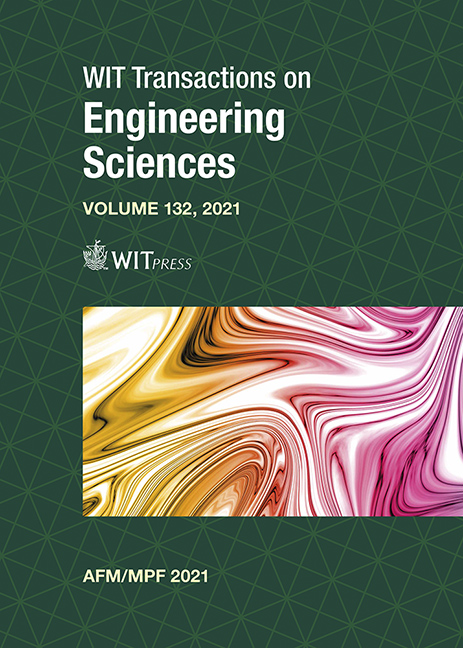DESIGN OF OPTIMAL CONDUCTANCE PROBES FOR TWO-PHASE FLOW TOMOGRAPHY AND LIQUID HOLDUP: APPLICATION TO THE DETERMINATION OF THE AVERAGE VOID FRACTION IN A REGION
Price
Free (open access)
Transaction
Volume
132
Pages
13
Page Range
13 - 25
Published
2021
Paper DOI
10.2495/MPF210021
Copyright
Author(s)
JOSÉ LUIS MUÑOZ-COBO, YAGO RIVERA, CÉSAR BERNA, ALBERTO ESCRIVÁ
Abstract
The knowledge of the characteristics of two-phase flows is an important issue in a wide variety of engineering applications. The design of optimal conductance probes for two-phase tomography allows the determination of the shape of a rapidly moving wavy film of water under gravity and shear stress forces exerted on the interface by a gas-phase. Obtaining the characteristics of the interfacial waves can be achieved with a proper design of this kind of sensors. Other application of these probes is for holdup, in this case the determination by conductance measurements of the average void fraction inside a region depends on the effective conductivity of the mixture, which depends not only on the void fraction but also on its distribution inside the region, which in general relies on the two-phase flow regime. In this paper we use the expressions developed recently for the relative conductance of two-plate conductance sensors and those developed previously for two-ring sensors, in order to obtain the best probe designs to be used in different applications of annular two-phase flow tomography. In addition, we discuss the best way to optimize these probes to achieve better results and accuracy when measuring the characteristics of the disturbance and ripple waves as height, frequency and amplitude produced in annular two-phase flow. Also, we use these expressions to optimize the design of the sensors for hold up applications, discussing the effect of different void fraction distributions on the effective conductivity and the measured average void fraction. The computed results have been validated with experimental data obtained from different well-known authors in this field. Finally, we discuss the best type of conductance probes to be used for each specific application and the geometric characteristics of its electrodes as width, height, and separation between them.
Keywords





